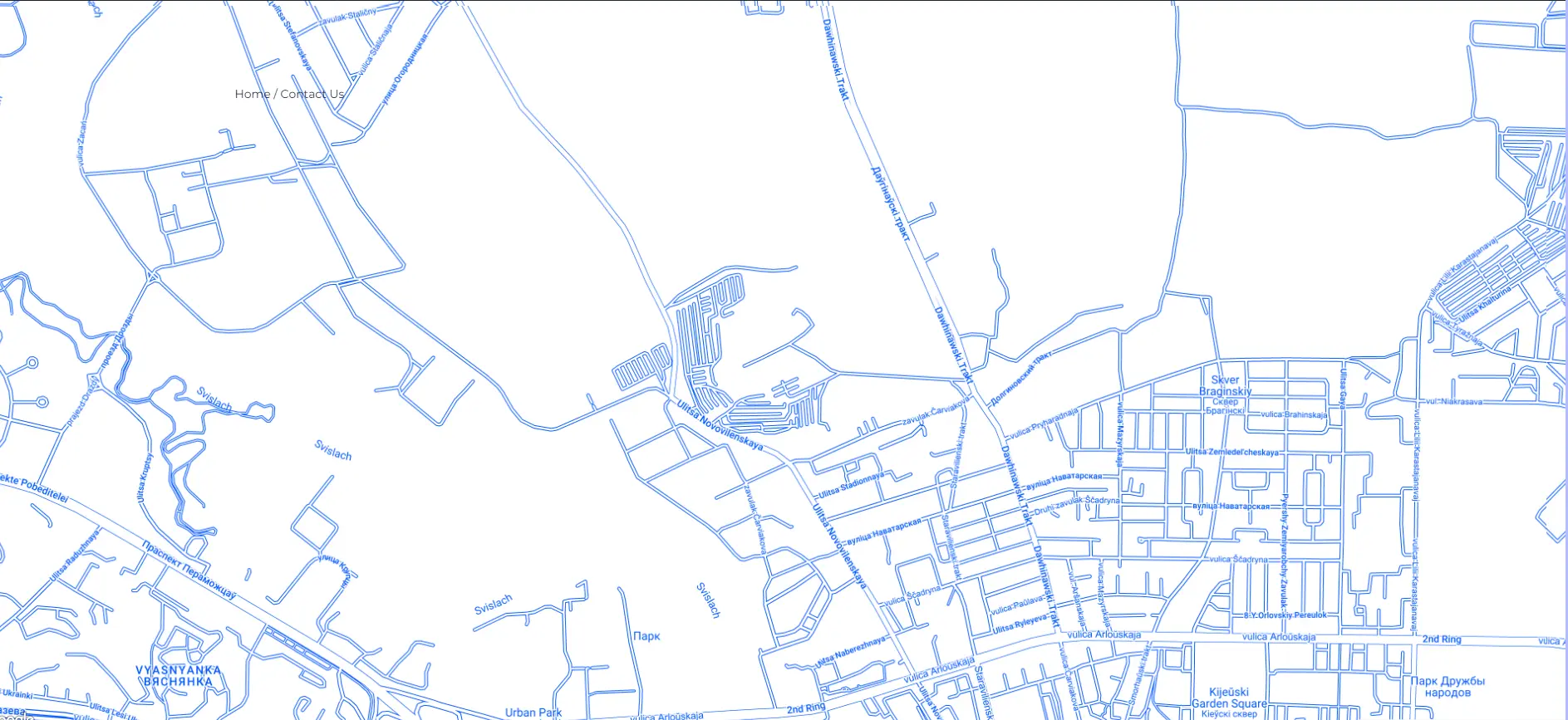Division of Debts Upon Divorce
Table of Contents
The division of property during a divorce often becomes a complicated and emotionally stressful process. While dividing an apartment, a car, or household appliances is relatively straightforward, the issue of dividing debts causes the most disputes between spouses. Loans, mortgages, personal borrowings, and business liabilities can all become subjects of litigation, especially if one party believes they should not be responsible for the other’s debts.
In practice, debt obligations are often the main reason for prolonged disputes and mistakes: it is not always clear which debts are considered joint and which are personal, who must pay them after the divorce, and how to protect one’s interests if the loan was taken in the name of one spouse but used for the benefit of the family.
In this article, we will examine how debts are divided in Belarus when a marriage is dissolved, what principles the courts apply, what evidence matters, and what to do if a former spouse refuses to repay joint obligations.
What Is Considered Joint Debt of the Spouses
When a marriage is dissolved, property disputes between spouses involve not only the division of assets but also obligations such as loans, borrowings, promissory notes, and other financial commitments. It is important to understand that not every debt that arose during the marriage is recognized as joint. A debt is considered joint only if it arose in the interests of the family and was used for common needs.
Principles for Determining Joint Obligations
Joint debts of spouses are those obligations for which both spouses bear equal responsibility, even if the contract was signed by only one of them. The main principle is the purpose of the debt. If the funds were spent on the family’s needs, such as purchasing housing, paying for repairs, buying household appliances, covering medical expenses, vacations, or children’s education the court will generally recognize such a debt as joint.
It does not matter which spouse signed the loan agreement, husband or wife. If it is proven that the debt served the interests of the family, both spouses will be required to participate in its repayment.
Criteria: Purpose of the Loan, Time of Origin, Family Interests
To determine whether a debt is joint, the court typically analyzes:
- Purpose of the loan. If the funds were used to meet the common needs of the family, for example, purchasing furniture, a car, or paying for medical services, the debt is recognized as joint.
- Time of origin. Debts incurred during the marriage are recognized as joint. Obligations that arose before the marriage or after its dissolution are considered personal.
- Family interests. If the money was spent on the personal needs of one spouse (for example, gambling, expensive gifts to third parties, personal investments), the debt will not be considered joint even if the loan was taken during the marriage.
Each of these criteria must be supported by evidence: the loan agreement, bank statements, receipts, or witness testimony.
Examples: Loans for Housing, Cars, Renovations, Education, Business
In practice, the following categories are most often considered joint debts:
- Mortgage loans taken to purchase housing where the family lived.
- Consumer loans and borrowings for household appliances, home renovations, or the purchase of a car.
- Education loans, if the studies were paid for to increase the family’s income or to cover children’s education.
- Business-related debts, if one spouse was engaged in entrepreneurial activity and the income was used to support the family.
In each case, it is important to determine exactly how the borrowed funds were used. This often becomes a key factor in court proceedings.
Personal Debts of Each Spouse
When a marriage is dissolved, it is important to distinguish between joint debts and personal debts, as the latter are not subject to division. Personal debts are obligations that arose outside the interests of the family and were intended to satisfy individual needs of one spouse. Responsibility for such debts lies solely with the person who incurred them, even if the marriage had not yet been dissolved.
When a Debt Is Considered Personal
A debt is considered personal if it:
- Arose before the marriage. For example, a loan taken before the relationship was officially registered.
- Arose after the divorce, even if the money was spent on property previously used jointly.
- Was taken during the marriage but used for personal purposes not related to the family’s needs.
- Resulted from unlawful actions of a spouse, such as fines, penalties, or compensation for damage caused.
Debts that were not agreed upon with the other spouse and did not benefit the family are also personal. The mere fact of being married does not make a debt joint this must be proven.
Obligations Not Related to Family Needs
Some of the most common examples of personal debts include:
- Loans for expensive personal items that are not used for family purposes (for example, collectibles, hobby-related equipment, costly gear).
- Borrowings used for investments, personal projects, or risky transactions that brought no benefit to the family.
- Debts from gambling, online betting, or personal loans without documented proof of their use.
- Fines, child support payments, or compensation for damages when they relate solely to the actions of one spouse.
When reviewing a case, the court evaluates not only the purpose of the funds but also the actual behavior of the parties, whether the other spouse knew about the loan, whether the expenses were agreed upon, and whether they served the interests of the family.
Court Practice on Disputes Regarding Personal Debts
Belarusian court practice shows that the key factor in these cases is evidence of how the funds were used.
For example:
- The court recognizes a debt as personal if the loan was taken without the other spouse’s knowledge and used to purchase personal property that was not used by the family.
- In one case, the court rejected a request to divide a loan taken to finance the husband’s business because the wife did not participate in the business and did not receive income from it.
- In another case, the court recognized the debt as joint when the funds were spent on renovating the apartment where both spouses lived even though only one of them had taken out the loan.
Thus, the distinction between personal and joint debts depends not on formal factors (such as the name on the contract), but on whose interests the borrowed funds actually served.
How Loans and Borrowings Are Divided During Divorce
The division of debts in a divorce is one of the most complicated aspects of property-related disputes. Even if the spouses have already divided their assets, obligations to banks and lenders remain, and determining who must repay them must be addressed separately. Debt division can occur voluntarily through an agreement between the parties or through the court if no compromise is reached.
Voluntary Agreement Between Spouses
The optimal scenario is to resolve debt issues amicably, without going to court.
Spouses may conclude a written agreement on the division of debts, specifying:
- who is responsible for repaying a particular loan or borrowing and in what proportion;
- the procedure for compensation if one spouse assumes a greater share of the debts;
- the possibility of transferring a debt to one spouse with subsequent execution of additional documents at the bank.
It is important to understand that banks and credit institutions are not required to accept the spouses’ internal arrangements. If a loan is issued in one person’s name, that individual remains the legal debtor until the loan is fully repaid, even if the spouses have agreed otherwise. Therefore, in cases of significant debt, it is advisable to coordinate changes to the loan agreement or the issuance of a new obligation with the bank in advance.
Division of Debts Through the Court: Procedure, Evidence, Assessment
If the parties cannot reach an agreement, the matter is resolved in court. The court examines each debt individually, determining:
- when and for what purpose the loan was taken;
- whether the borrowed funds were used in the interests of the family;
- who actually made the payments;
- whether the other spouse was aware of the loan’s existence.
Evidence may include loan agreements, receipts, payment slips, correspondence, and witness testimony.
If the court recognizes the debt as joint, it is allocated proportionally to the spouses’ shares of the property or divided equally. At the same time, the court may consider the financial capabilities of the parties, the presence of children, and other circumstances.
If the debt is personal in nature, the court will exclude it from the common pool of obligations and assign the responsibility for repayment solely to the spouse who incurred it.
Joint Loans and Guarantees: How to Avoid Double Liability
Special attention should be paid to joint loans and guarantees. When spouses act as co-borrowers, they bear joint and several liability: the bank has the right to demand full repayment from either of them. Even after the divorce, this obligation remains until the loan is fully repaid.
To reduce financial risks:
- during debt division, the spouses should contact the bank and execute a new loan agreement specifying who is responsible for repayment;
- if one spouse stops participating in the payments, this should be documented and the lender should be notified;
- if acting as a guarantor, it is advisable to seek release from the guarantee after the divorce, if permitted by the bank.
Thus, when dividing debts after a divorce, it is necessary to consider not only the internal arrangements between spouses but also the position of credit institutions, as they determine who remains legally responsible for repayment.
Mortgage Debts and Business Obligations
Financial obligations related to real estate and business activities require special consideration during divorce. Such debts are often substantial, long-term, and directly linked to property that is also subject to division. When reviewing such disputes, the court evaluates not only the existence of the debt but also the purpose of the borrowing, the source of payments, and the interests of the family.
Mortgage Loans: Specifics of Dividing Property With Debt
A mortgage is one of the most common points of contention in divorce. If the property was acquired during the marriage and the loan is in one spouse’s name, the court generally recognizes the mortgage as a joint obligation, provided that the loan funds were used for the family’s needs.
Key aspects of mortgage division:
- Joint ownership and debt. The division of the property is usually accompanied by proportional distribution of the remaining debt, if the property is divided equally, the debt is divided likewise.
- Role of the bank. The bank remains the lender and is not obliged to change the loan terms at the spouses’ request. Even if the court assigns payments to one of the spouses, the bank may still demand repayment from the registered borrower.
- Compensation. If one spouse receives the property and the other is released from the debt, the court may order monetary compensation reflecting that spouse’s share of the paid or outstanding loan.
Thus, when dividing mortgage obligations, it is important to consider the bank’s position and the actual participation of each spouse in payments, as these factors are often decisive in the court’s ruling.
Business Obligations, Debts of Individual Entrepreneurs, and Company Participants
Business-related debts have a different nature. If one spouse is an individual entrepreneur, they bear personal liability for their obligations. Such debts are generally not considered joint unless the spouse can prove that the borrowed funds were used for family needs.
A different situation arises when the spouses operated a business together or the other spouse invested funds, worked in the company, or was a co-founder. In such cases, the court may recognize the activity as joint in nature, meaning both debts and profits are subject to division.
The court analyzes:
- in whose name the loans or borrowings were issued;
- how the borrowed funds were used;
- whether the business generated income used for the family;
- who actually managed the business.
If the entrepreneur or company participant used the borrowed funds exclusively for commercial purposes, without family involvement, the debts are considered personal obligations.
How Courts Assess the Use of Borrowed Funds
The purpose of the loan is the key factor. The court determines whether the loan was taken for family or personal interests. For example:
- if the money was spent on purchasing housing, furniture, or children’s education, the debt is considered joint;
- if the funds were used for business development, investments, or personal expenses, the debt is usually recognized as personal;
- if the loan was issued in one spouse’s name but used by both spouses, this may confirm its joint nature.
The court evaluates not only the documents but also the parties’ conduct: who negotiated with the bank, who made payments, and who used the acquired property.
As a result, the decision may be individualized: the court may divide not only the debt amount but also the responsibility based on each spouse’s degree of involvement.
Protecting a Spouse’s Rights During Debt Division
Dividing debts during a divorce requires careful handling, especially in cases involving personal obligations of one spouse. It is important not only to correctly determine whether a debt is joint or personal but also to gather evidence supporting your position in court or during an agreed division.
How to Prove That a Debt Is Personal
To have the court recognize a debt as personal, it must be shown that it was not incurred for family needs but for the individual purposes of one spouse. This includes:
- loans and borrowings for business, investments, or personal expenses;
- credit cards and microloans used exclusively by one spouse;
- borrowings made without the other spouse’s involvement and not directed toward joint property.
It is essential to have evidence of how the funds were used: payment documents, bank statements, contracts with third parties.
Relevant Documents and Evidence
To protect their interests, a spouse may rely on the following types of evidence:
- bank documents: agreements, statements, and proof of how the funds were spent;
- loan or credit agreements: to establish who the borrower is and the repayment terms;
- witness testimony: from relatives, acquaintances, or employees who can confirm how the funds were used;
- financial reports: in cases of joint business activities or corporate structures.
Combined use of these documents allows the court to accurately determine whether the debts are personal or joint.
Actions When a Former Spouse Avoids Repaying Debts
If one spouse avoids fulfilling their obligations after the division of debts, the following steps should be taken:
- Claim and negotiation: send a written request asking them to fulfill their obligations, documenting any refusal or avoidance;
- Court action: file a claim for enforced recovery, attaching evidence regarding the nature of the debt and the obligations;
- Enforcement proceedings: submit the writ of execution to the enforcement authorities;
- Protection of property interests: in some cases, it may be possible to demand compensation or revision of the debt division agreement.
It is important to act promptly and document all steps to protect your rights and interests in the event of a dispute.
Conclusion
The division of debts during divorce is a process requiring careful attention and strict adherence to procedures. Correctly determining personal and joint obligations, gathering evidence, and properly drafting documents help protect the property interests of each spouse and avoid unnecessary disputes.
Our legal team provides full support at every stage of debt division: we advise on rights and obligations, prepare required documents, represent clients in negotiations and court, and oversee enforcement of decisions. This comprehensive approach ensures safety and efficiency, minimizing risks for our clients.
Contact us
If you have any questions about the division of debts during a divorce in Belarus, we will be happy to help! Our long-term experience will help you choose a lawyer to represent your interests.
- +37529142-27-19 (WhatsApp, Viber, Telegram);
- info@ambylegal.by.




